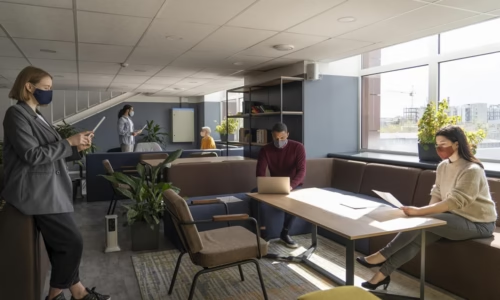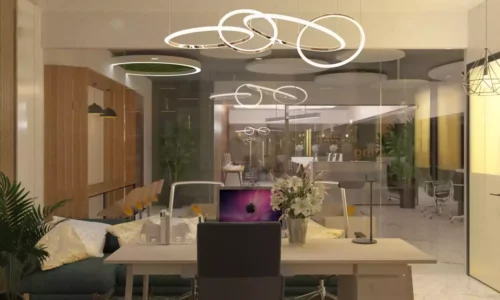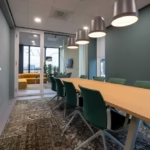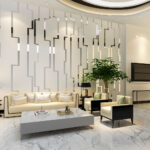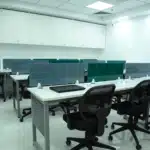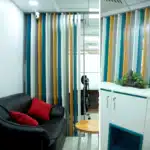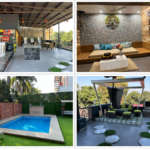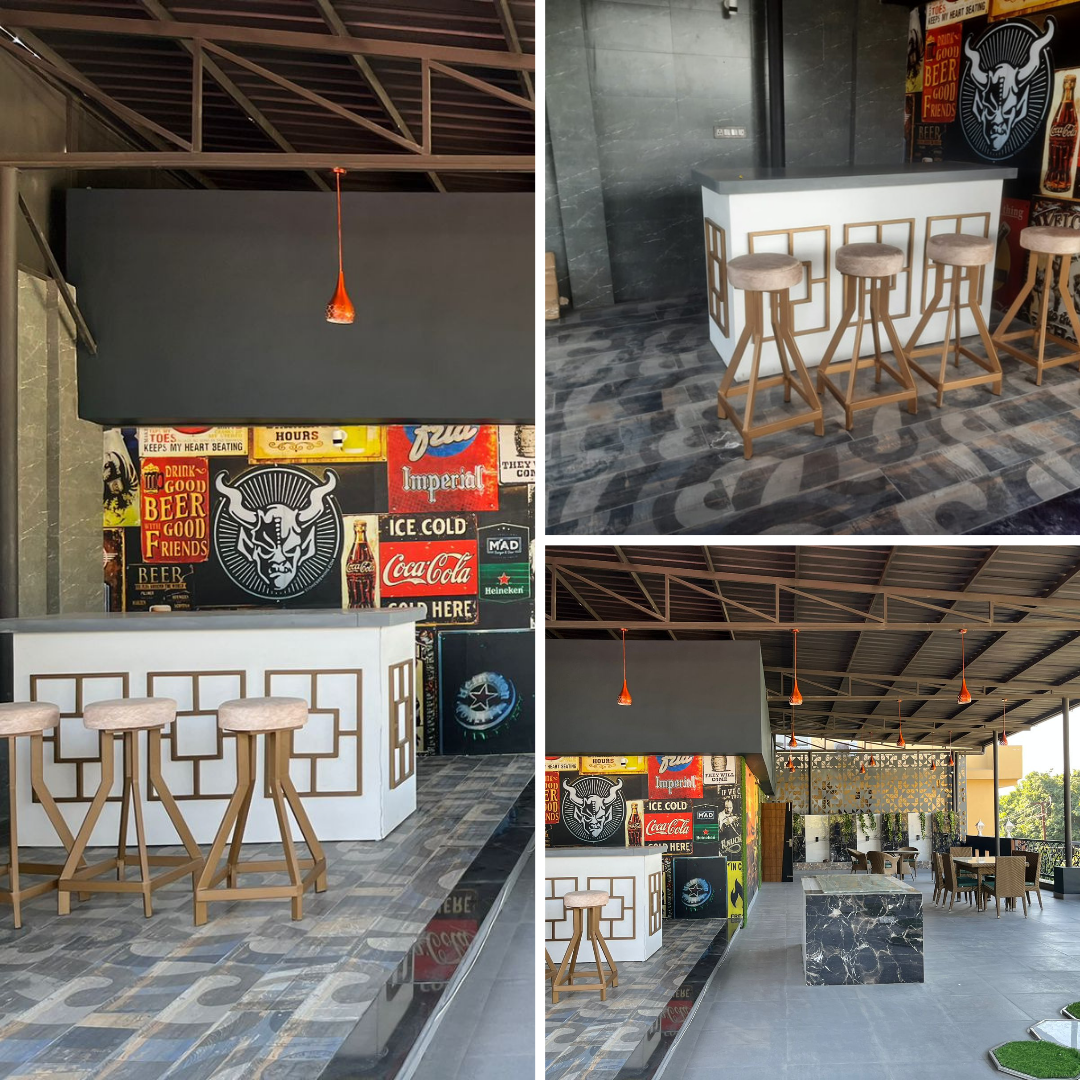Modern Reception Area Designs That Impress Clients
- Amodini Systems
- 0 Comments
A modern reception area is the first thing visitors notice when they walk into your office. It creates the first impression of your brand, your professionalism, and your work culture. In today’s business world, companies focus on creating reception spaces that look stylish, welcoming, and functional. A well-designed reception area helps clients feel comfortable, confident, and connected to your brand. In this blog, you will learn what modern reception area design is, why it matters, and how businesses can create a beautiful, practical, and impressive space.
What Are Modern Reception Area Designs?
Modern reception area designs focus on creating a space that looks clean, stylish, simple, and welcoming. These designs use modern furniture, smart layouts, natural light, soft colors, and technology to create an attractive environment. The main idea is to make visitors feel comfortable the moment they arrive while also showing your company’s identity and professionalism.
Modern reception design is not only about decorating. It is also about planning how visitors move, how your team works, and how your brand is represented the moment someone enters your office. Many companies now use modern designs to make their reception areas look more open, bright, and organized.
Why Modern Reception Area Designs Matter
A reception area plays a key role in shaping how clients feel about your company. A modern, clean, and well-planned reception space can increase trust and make clients feel that your business is reliable. It also improves the experience for employees, delivery partners, and guests.
A modern reception design helps in many ways. It sets the tone for the rest of your office. It shows your attention to detail. It reflects your brand values. It also improves the flow of visitors and makes customer interactions smoother.
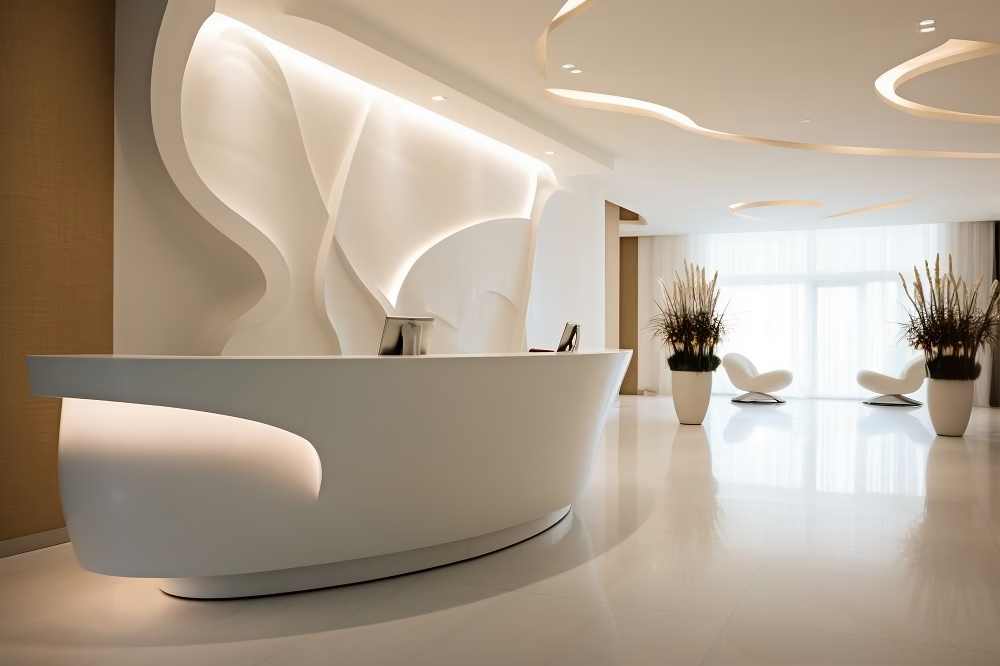
Key Elements of Modern Reception Area Design
Modern reception design includes several important elements. These features work together to create a space that is visually appealing, easy to navigate, and comfortable. Below are the main elements used in modern reception areas.
Use of Minimalist Design
Minimalist design focuses on clean lines, open spaces, and simple decoration. Modern reception areas avoid clutter and make the space look more open and organized. Minimalism also creates a calming environment for visitors. It ensures that furniture and decor are placed purposefully and that there is enough breathing room for movement.
Use of Natural Light and Bright Spaces
Light plays a big role in modern design. Natural light makes the reception area look bigger and more inviting. Large windows, glass walls, and open layouts help bring in sunlight. Bright spaces make clients feel refreshed and comfortable. It also reduces the need for artificial lighting, which makes the space more energy-efficient.
Comfortable and Modern Furniture
Modern reception furniture focuses on comfort and style. Sofas, chairs, tables, and reception desks in modern spaces use smooth designs, neutral colors, and strong materials. The goal is to create seating that is comfortable for clients while also matching your design style. Good furniture also improves posture and helps visitors feel relaxed during their waiting time.
Modern Technology Integration
Technology has become an important part of modern reception design. Many offices now use digital sign-in systems, automated check-in kiosks, video displays, digital notice boards, charging stations, and Wi-Fi access. These features help visitors check in quickly, stay informed, and feel more engaged.
Integrating technology also reduces errors, speeds up processes, and makes the reception area more efficient. It also shows that your business is modern and future-ready.
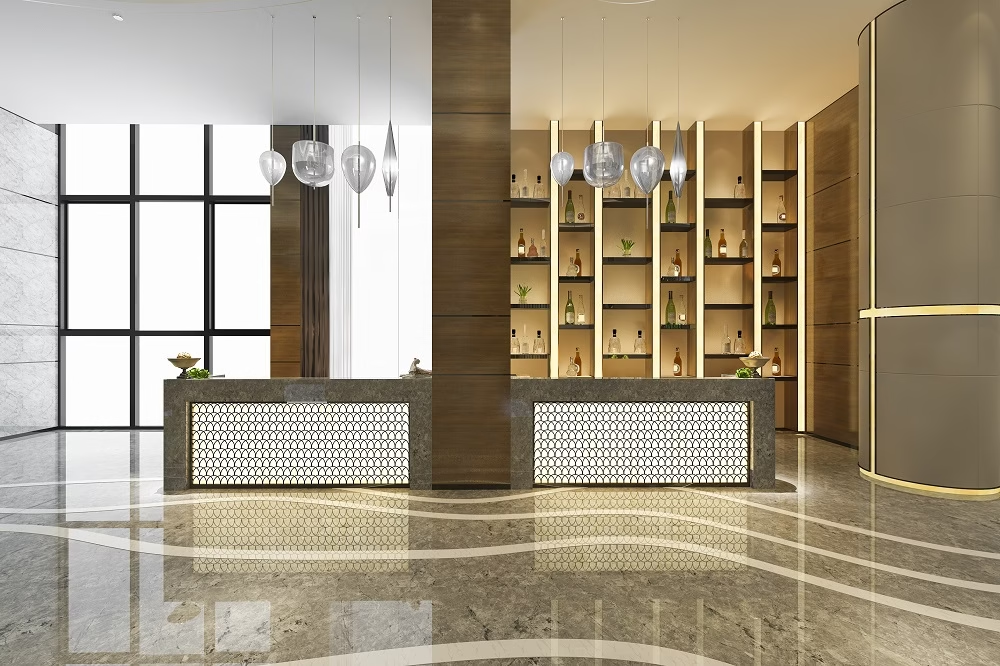
Use of Warm and Neutral Colors
Color selection affects the atmosphere of the reception space. Modern designs often use warm and neutral colors such as white, beige, grey, cream, and soft earth tones. These colors create a peaceful environment. They also blend easily with other design elements such as wooden panels, green plants, paintings, and furniture.
Neutral colors also make the space look cleaner and more elegant. Visitors often feel more relaxed when surrounded by soft shades rather than bright, distracting colors.
Branding Through Design
Modern reception areas often include branding elements that tell visitors about your company. This can include your logo, brand colors, wall graphics, or a highlighted brand message. Branding inside the reception area helps clients connect with your company the moment they enter.
It also makes your office space look consistent and professional. When clients see strong branding, they feel more confident about your business identity.
Use of Indoor Plants and Natural Elements
Nature plays a big role in modern design. Many offices now use plants, wooden textures, natural stones, and green walls to create a fresh, relaxing atmosphere. Indoor plants improve air quality and reduce stress. Natural elements also make the reception area feel warm and welcoming.
Plants can be placed near seating areas, reception desks, corners, or along walkways. They help balance the modern design with a touch of nature.
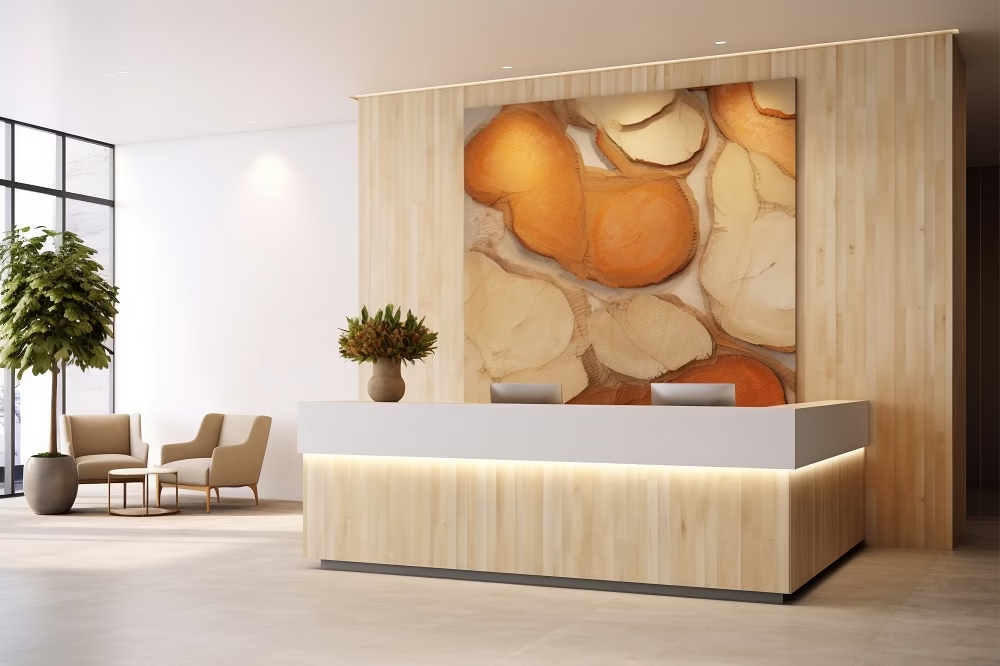
Smart Space Planning
Modern reception design focuses on smart space planning. The layout should be comfortable for visitors, easy for staff to manage, and smooth for movement. A well-planned layout ensures that visitors know where to sit, where to walk, and where the reception desk is.
Space planning also helps avoid confusion and makes the reception area look organized. It gives every section—waiting area, reception desk, entry, and exit—its own clear purpose.
Modern Lighting Fixtures
Besides natural light, modern reception areas use attractive lighting fixtures. LED lights, pendant lights, wall lights, and soft ceiling lights are commonly used. These lights improve the mood, highlight important areas, and make the space look bright.
Soft lighting creates a relaxing environment. Highlight lighting draws attention to the reception desk or branding elements. Proper lighting also helps create a professional atmosphere.
Key Features of Modern Reception Area Design
Below is a simple table summarizing the important elements:
| Feature | Purpose |
|---|---|
| Minimalist Design | Creates clean, open, and clutter-free space |
| Natural Light | Makes the area bright, fresh, and welcoming |
| Modern Furniture | Provides comfort and enhances appearance |
| Technology Integration | Improves check-in process and efficiency |
| Neutral Colors | Creates a calm, elegant, and simple look |
| Branding | Strengthens brand identity inside the office |
| Plants & Natural Elements | Adds freshness and reduces stress |
| Smart Layout Planning | Improves visitor flow and organization |
| Modern Lighting | Enhances mood and highlights key areas |
Importance of First Impressions in Business
A modern reception area is not only about beauty. It directly affects your business reputation. When clients walk in, they start forming an opinion immediately. A clean, modern, and welcoming reception area helps build trust. It shows that your company is organized and cares about details.
First impressions can influence client decisions. If your reception area is outdated or unorganized, clients may assume the same about your business services. A modern design helps set the right expectations.
How Modern Reception Designs Improve Client Experience
Client experience has become very important for all industries. A modern reception design improves the experience in many ways. It reduces waiting stress, provides comfort, and guides visitors smoothly. It also makes check-in faster and helps employees handle visitors more easily.
Good design also improves communication. Digital screens can show updates, company information, or waiting instructions. Comfortable seating and calming colors help clients feel relaxed even during long waits.
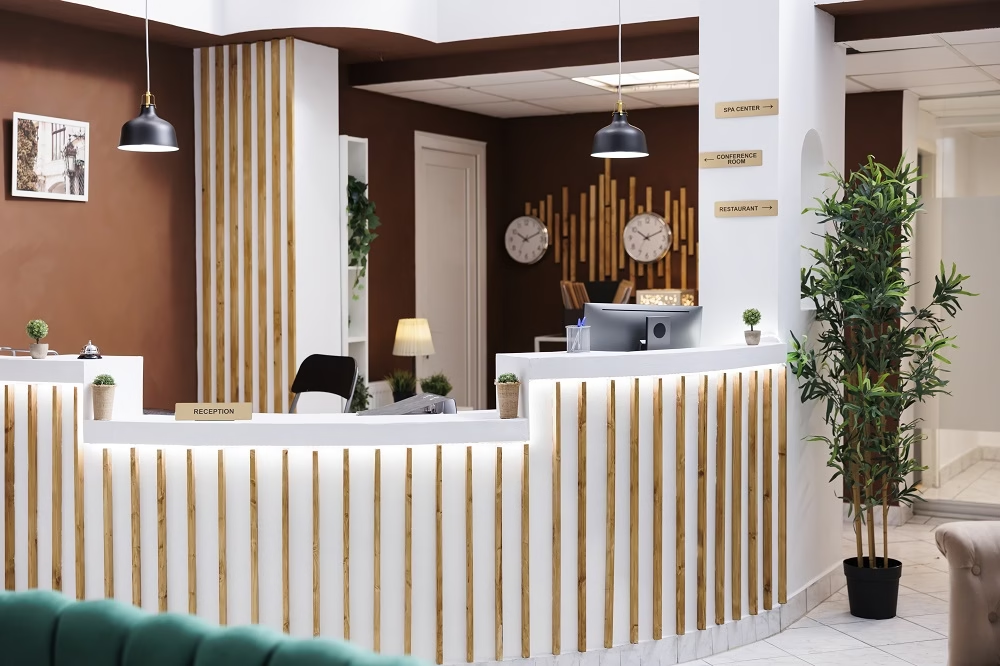
Conclusion
Modern reception area designs focus on simplicity, comfort, technology, and branding. These designs help businesses make a strong first impression, improve visitor flow, and showcase their brand identity. A modern reception area is more than just decoration. It is an important part of the client experience.
By using minimalist layouts, natural light, comfortable furniture, smart technology, indoor plants, and thoughtful space planning, companies can create a reception area that impresses every client. A well-designed reception space shows professionalism and makes visitors feel welcome, which helps build long-term trust and business relationships.

